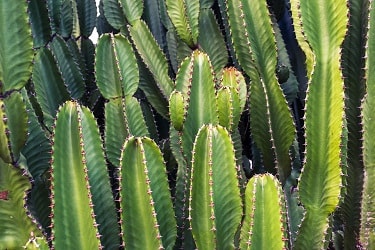
Drought-resistant plants such as cacti and succulents, make use of an enhanced form of photosynthesis to minimise water loss.
The research, published in journal The Plant Cell, could be used to help produce new crops that can thrive in previously inhospitable, hot and dry regions across the world.
Photosynthesis involves taking carbon dioxide from the atmosphere to convert into sugars using sunlight.
Scientists at the University of Liverpool in the U.K. found that these drought-resistant plants, such as cacti, agaves and succulents, make use of an enhanced form of photosynthesis known as crassulacean acid metabolism (CAM).
Unlike other plants, CAM plants are able to take up CO2 during the cooler night, which reduces water loss, and store captured CO2 as malic acid inside the cell, allowing its use for photosynthesis without water loss during the next day.
CAM photosynthesis is regulated by the plant's internal circadian clock, which allows plants to differentiate and pre-empt day and night and adjust their metabolism accordingly.
Process of Drought-Resistant Plant Photosynthesis: Know More - However, relatively little is known about the exact molecular processes that underpin the optimal timing of CO2 being stored and released in this unique way.
- Researchers looked at an enzyme called PPCK that is involved in controlling the conversion of CO2 to its overnight stored form.
- They wanted to know if PPCK is a necessary component for engineering CAM photosynthesis and tested this by switching the PPCK gene off in the succulent CAM plant Kalanchoe fedtschenkoi.
- They found that, for CAM to work properly, the cells must switch on PPCK each night driven by internal circadian clock.